为 VMware HCX 配置网络和计算配置文件
在本地安装 VMware HCX 连接器后,请将其链接到 Azure VMware 解决方案中的 VMware HCX 云。 此单元和下一个单元将完成此任务中涉及的步骤。
什么是站点对?
第一步是创建站点对。 站点对提供对源和目标 VMware vSphere 环境中的 VMware HCX 迁移服务进行管理、身份验证和编排时所需的网络连接。 在你的方案中,源是本地 VMware vSphere 环境,目标是 Azure VMware 解决方案。 下表提供了其他详细信息:
| 组件 | 备注 |
|---|---|
| HCX 连接器(源) | - 在部署 Azure VMware 解决方案后部署在本地 vSphere 环境中。 - 创建与 Azure VMware 解决方案的单向站点配对。 - 开始迁移到 Azure VMware 解决方案。 |
| HCX 云(目标) | - 在 Azure 中部署私有云后,预配 Azure VMware 解决方案。 - 通常是 VMware HCX 站点配对的目标。 - VMware HCX 云站点始终是软件定义的数据中心。 - 支持网络堆栈中第 2 层的网络扩展,这是可选的。 |
添加站点配对
登录到本地 vCenter Server。
在“菜单”下,选择“HCX”。
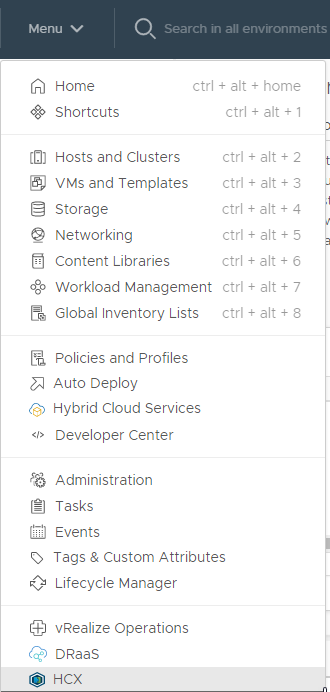
在“基础结构”下,选择“站点配对”。
在“配对第一个站点”下,选择“连接到远程站点”。
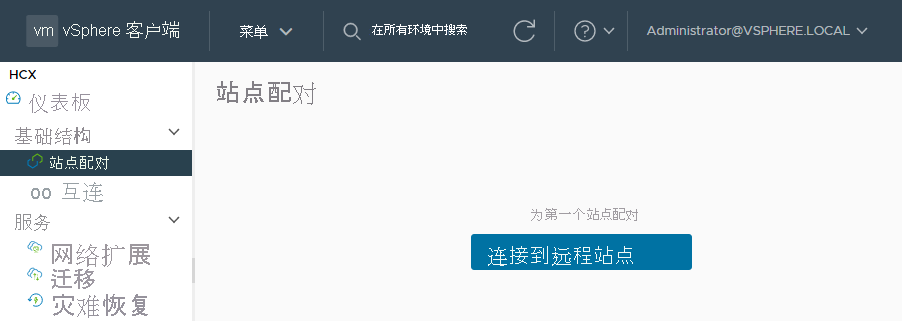
输入从上一个单元获取的 Azure VMware 解决方案 HCX 云管理器 IP 地址。
从 Azure 门户输入 Azure VMware 解决方案 cloudadmin@vsphere.local 用户名和密码。
选择“连接” 。 如果收到有关证书警告的消息,请导入该证书以继续。

为了使连接正常运行,VMware HCX 连接器需要通过端口 443 路由到 VMware HCX 云管理器 IP。 使用本地部署的 Azure ExpressRoute。
你会看到一个屏幕,其中显示 Azure VMware 解决方案中的 VMware HCX 云管理器和本地 VMware HCX 连接器已连接或配对。
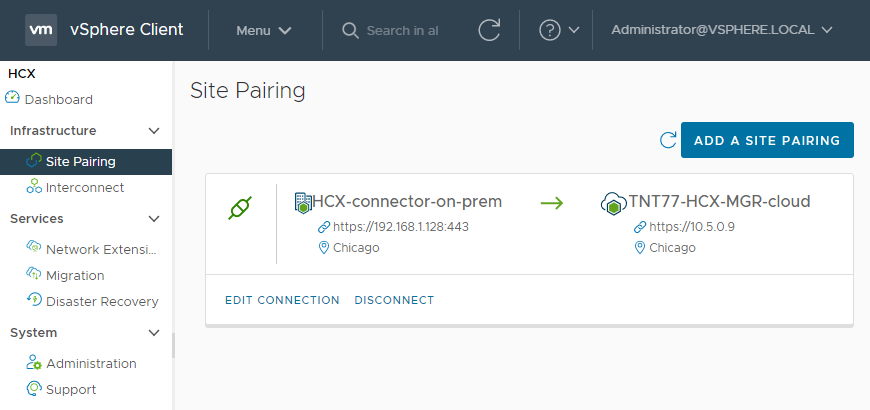
创建网络配置文件
VMware HCX 连接器会在本地部署一组需要多个 IP 段的自动化虚拟设备。 需要首先配置网络配置文件。 你将为每个要与 VMware HCX 配合使用的网络创建这些网络配置文件。 创建网络配置文件时,将使用在 VMware HCX 部署计划阶段标识的 IP 段。
登录到本地 VMware HCX 连接器。
创建四个网络配置文件:
- 管理
- vMotion
- 复制
- 上行
在“基础结构”下,选择“互连”>“多站点服务网格”>“网络配置文件”。 然后选择“创建网络配置文件”。
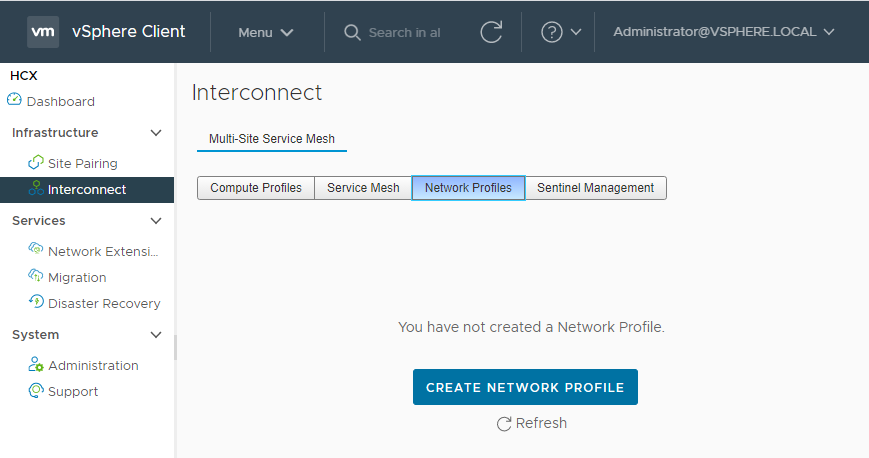
对于每个网络配置文件,请选择网络和端口组,提供名称,并创建该段的 IP 池。 然后选择“创建”。

创建计算配置文件
创建网络配置文件后,需要创建一个计算配置文件。 计算配置文件包含 VMware HCX 用于配置服务网格的计算、存储和网络设置。 通过服务网格来支持将 VM 从本地迁移到 Azure VMware 解决方案。
在“基础结构”下,选择“互连”>“计算配置文件”>“创建计算配置文件” 。
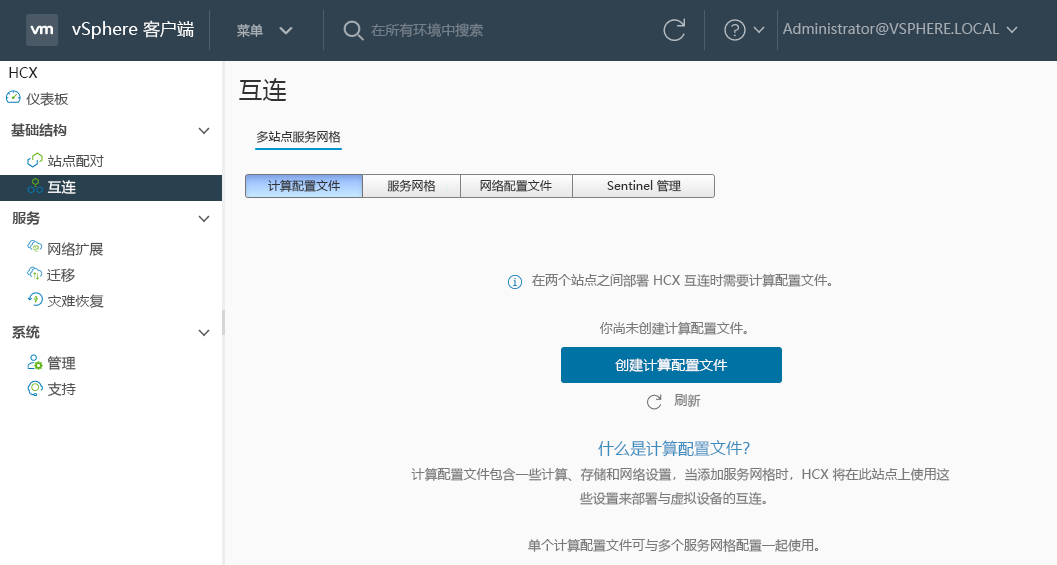
输入配置文件的名称,然后选择“继续”。
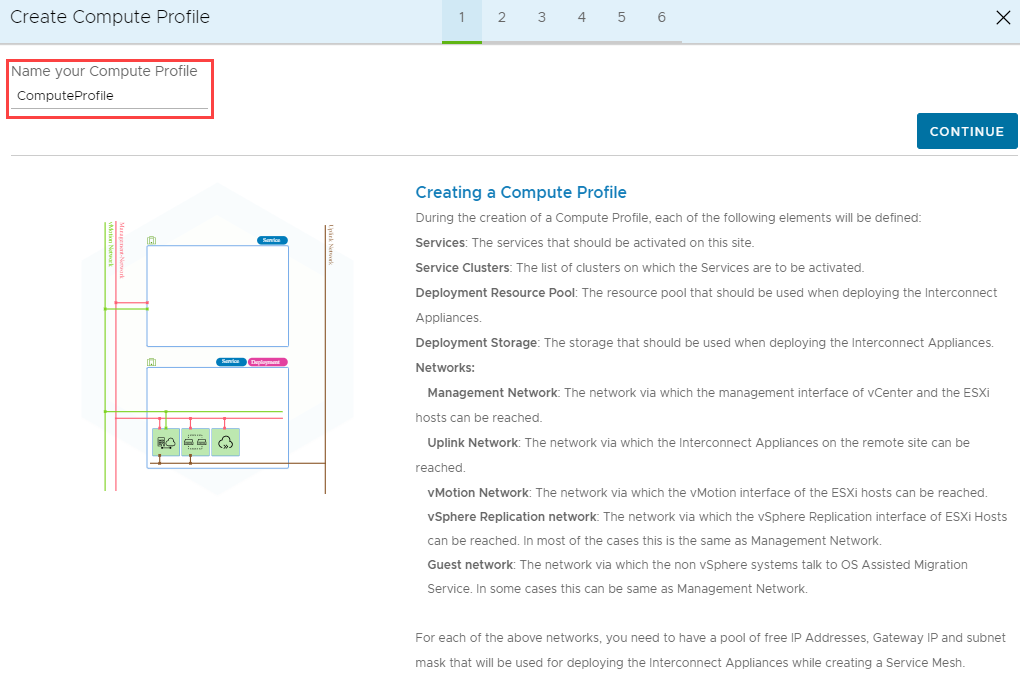
在下一个屏幕上,你将看到用于激活的服务设置。 回想一下,VMware HCX Enterprise 使用 Azure VMware 解决方案进行部署。 如果需要 HCX Enterprise,则必须打开支持的票证。
选中可以使用 HCX Enterprise 密钥启用的所有默认服务,然后选择“继续”。
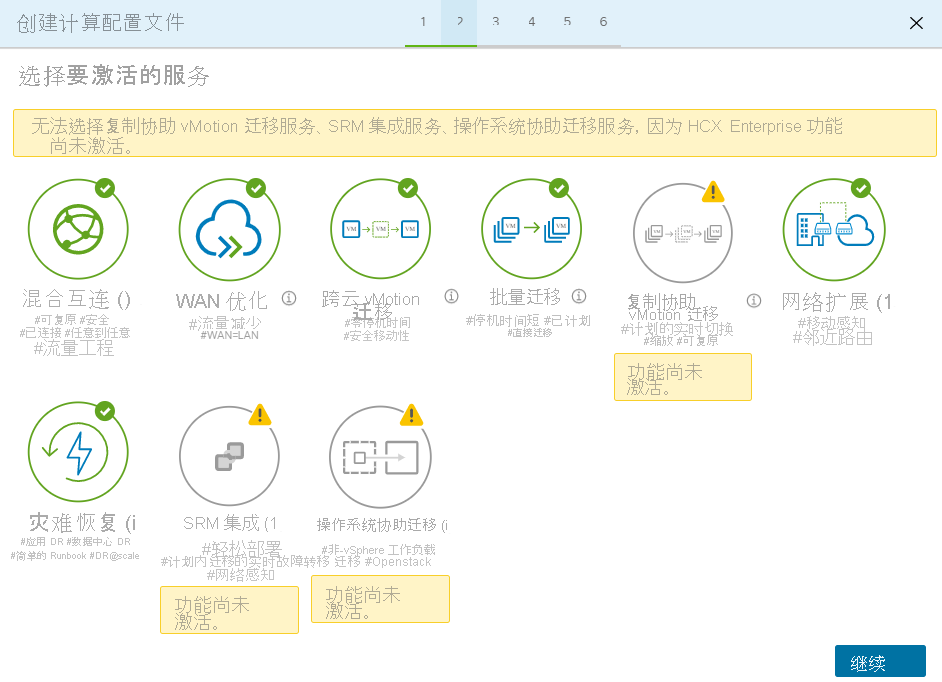
在“选择服务资源”中,选择用于启用选定的 VMware HCX 服务的一个或多个服务资源(群集)。
看到本地数据中心的群集后,选择“继续”。

在“选择数据存储”窗格中,选择用于部署 VMware HCX 互连设备的数据存储资源。 然后选择“继续”。 请注意,当选择了多个资源时,VMware HCX 将使用所选的第一个资源,直到其容量用尽。
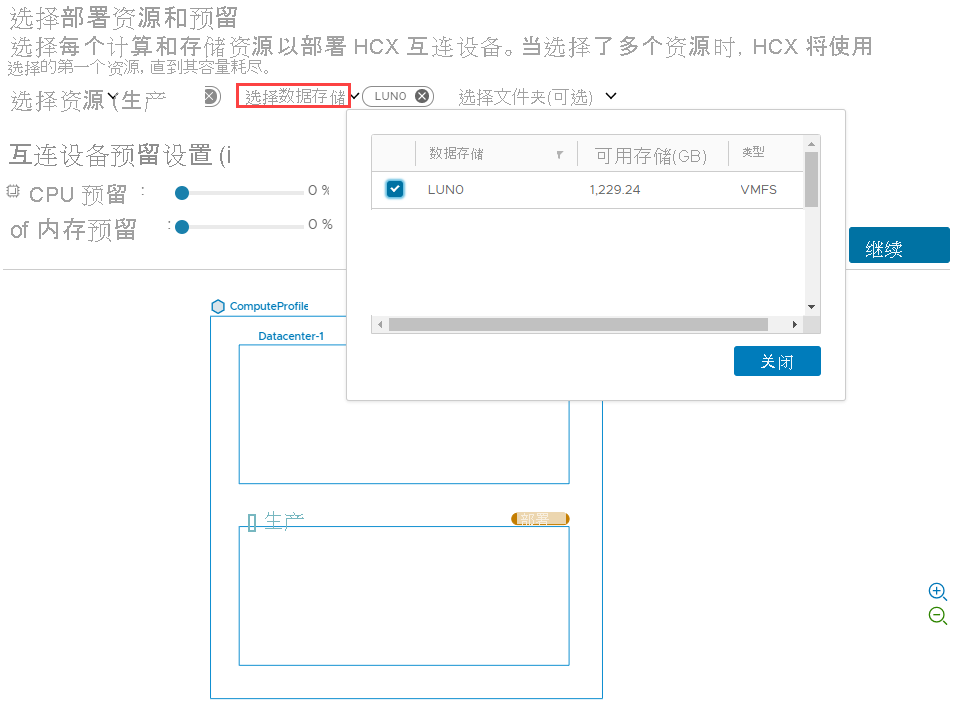
在“选择管理网络配置文件”窗格中,选择在前面的步骤中创建的管理网络配置文件,然后选择“继续”。

在“选择上行链路网络配置文件”窗格中,选择在前面的步骤中创建的上行链路网络配置文件,然后选择“继续”。
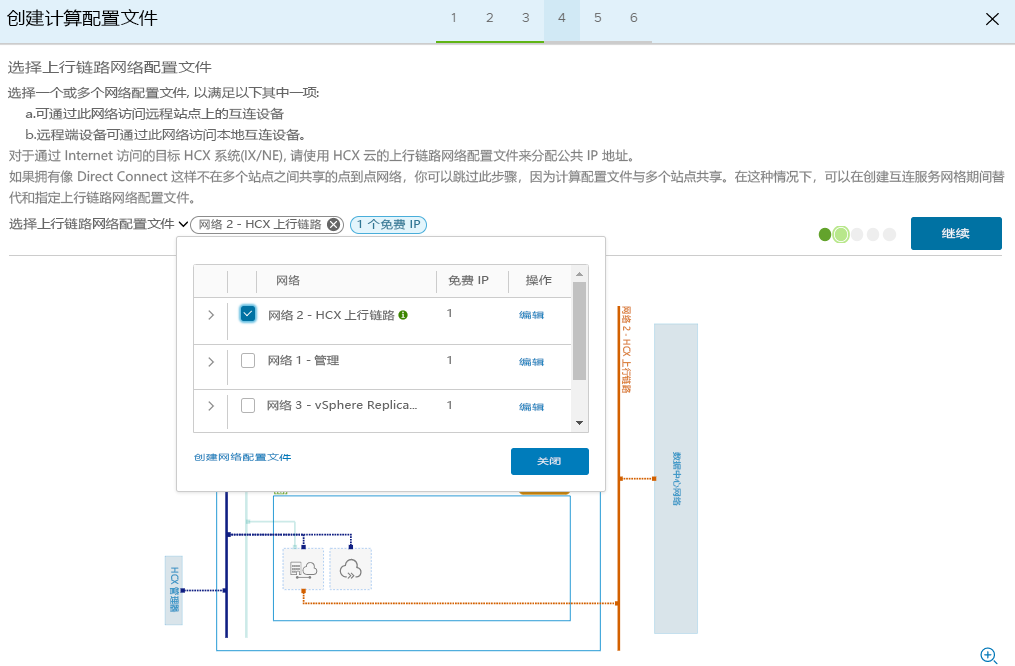
在“选择 vMotion 网络配置文件”窗格中,选择在前面的步骤中创建的 vMotion 网络配置文件,然后选择“继续”。
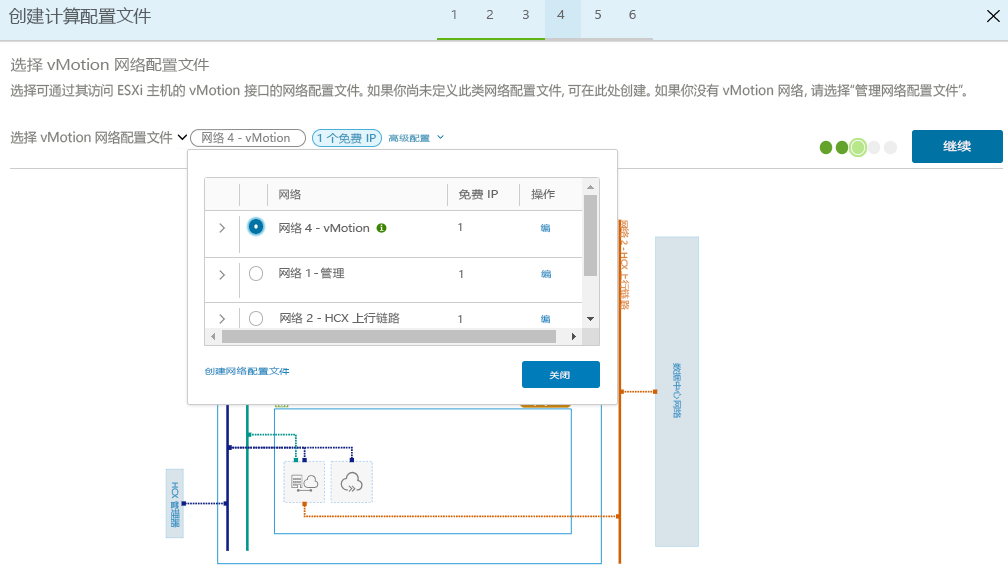
在“选择 vSphere 复制网络配置文件”窗格中,选择在前面的步骤中创建的复制网络配置文件,然后选择“继续”。
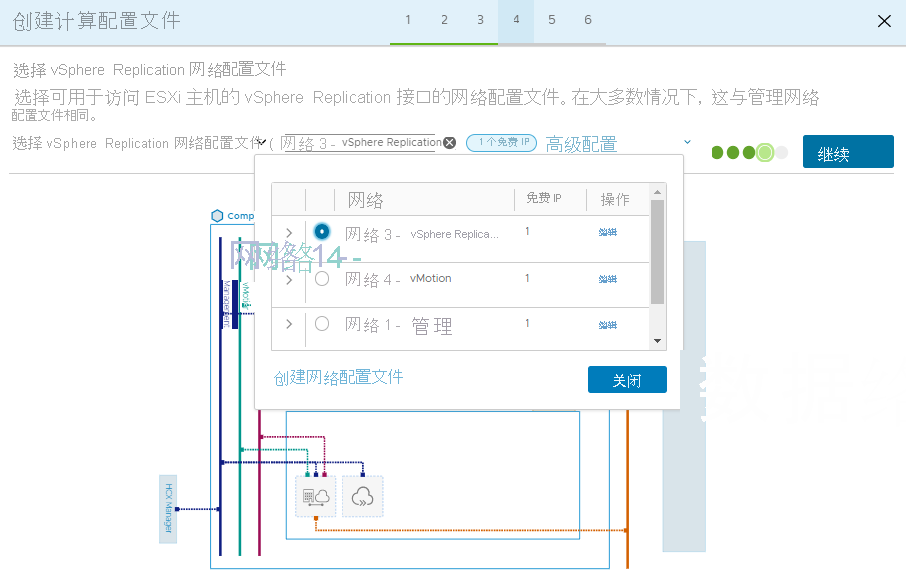
查看连接规则,然后选择“继续”。
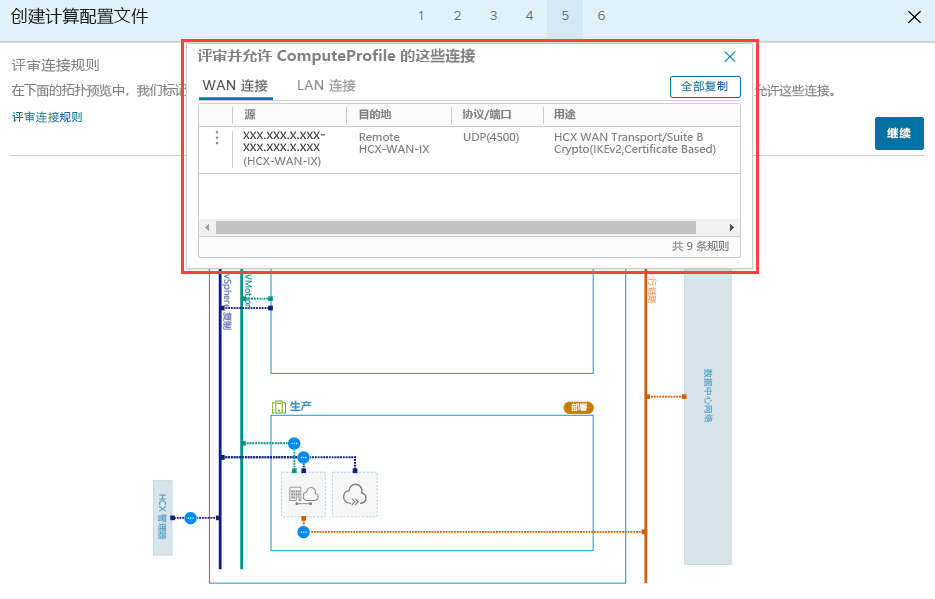
选择“完成”以创建完整配置文件。
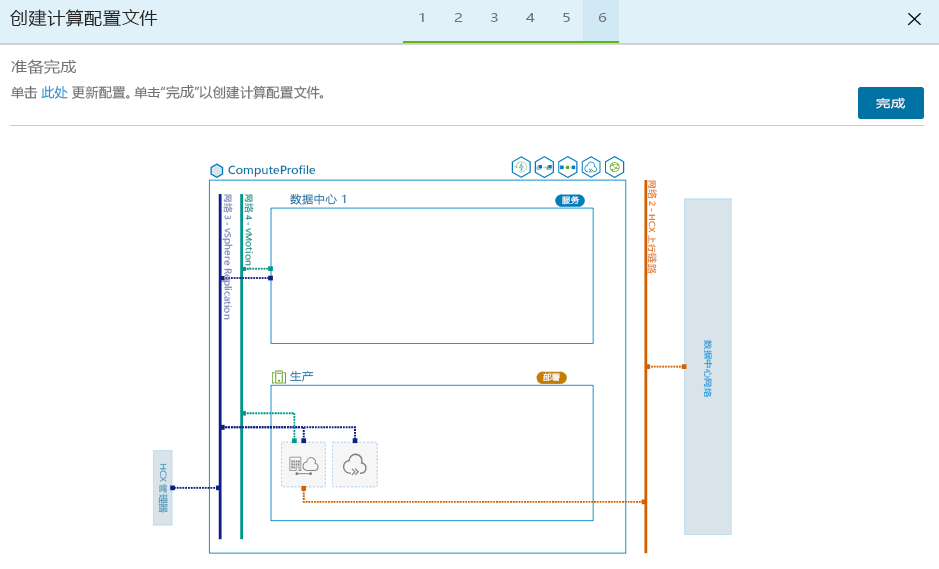
计算配置文件创建完成后,计算配置文件会列在“互连”内的“计算配置文件”中。
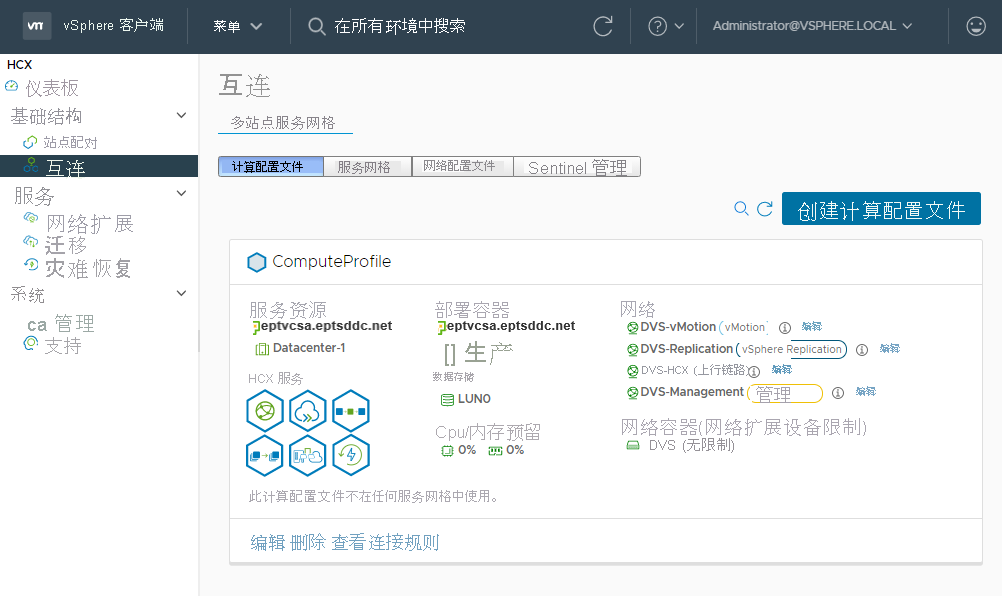
在下一个单元中,将介绍如何设置服务网格以完成 VMware HCX 连接器的本地配置。